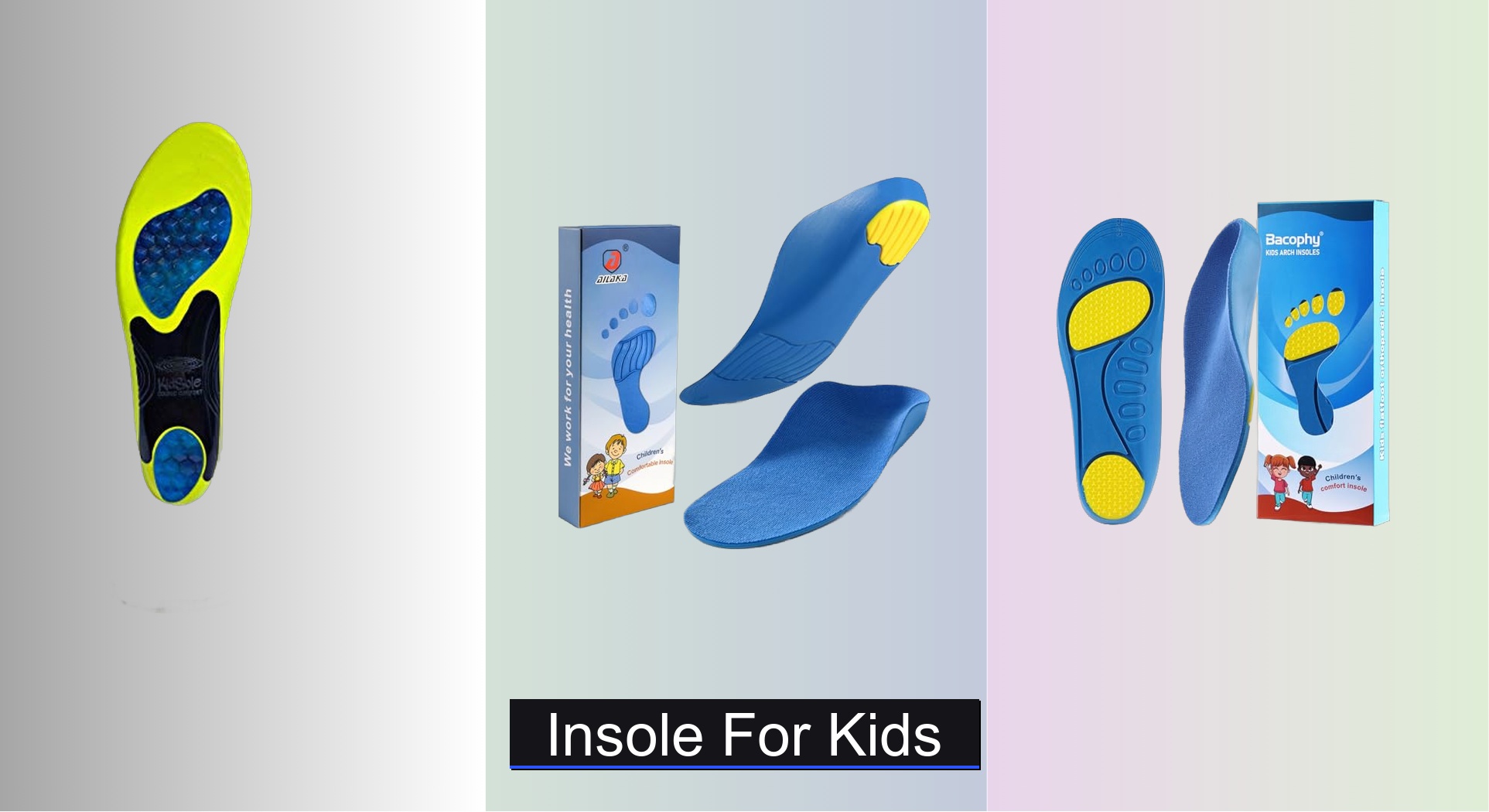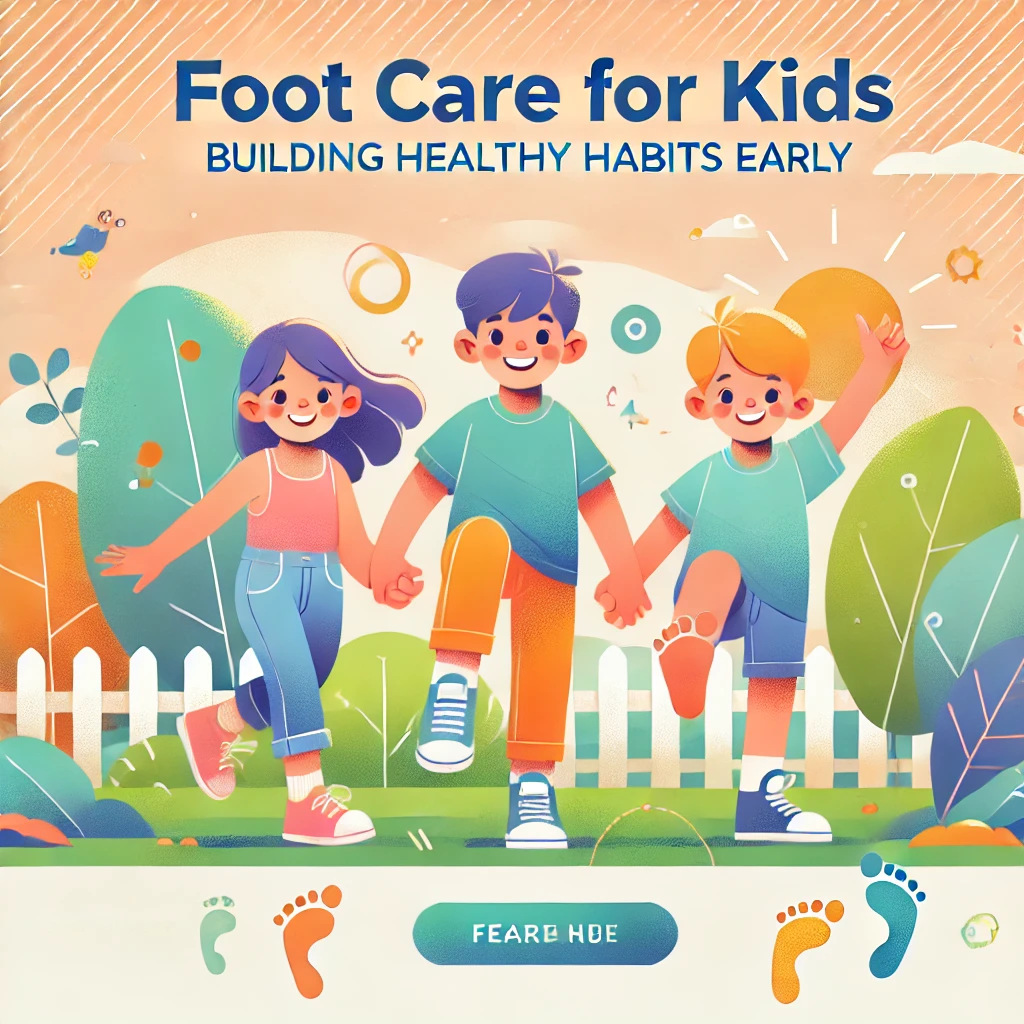Growing feet need proper support to develop correctly, yet many kids wear shoes with inadequate insoles that lack arch support, shock absorption, or moisture control. This can lead to discomfort, poor posture, and long-term foot issues like flat feet or overpronation—especially in active children. Finding the right insole for kids means balancing support, comfort, and durability while accommodating rapidly changing foot shapes.
We analyzed over 40 pediatric insole models, evaluating arch support, cushioning materials, breathability, and expert podiatry guidelines to identify the best options for different needs. Our top picks prioritize foot health, featuring contoured arches, deep heel cups, and trim-to-fit designs for a customized fit. Keep reading to discover the best insoles for kids that support healthy development, reduce pain, and stand up to daily wear.
Best Options at a Glance

Ailaka Kids Orthotic Arch Support Insoles
Best for Flat Feet & Pain Relief
- 3.5 cm
- Medical grade PU foam
- Deep U shape
- Velvet
- Trimmable

Kaps Arieto Breathable Kids Insoles
Best Breathable & Blisters Prevention
- Cotton, Latex Foam
- Cut to Fit
- Up to 23cm
- Dual-layer
- Lemon

Kaps Odour Stop Kids Insoles
Best for Odor Control
- Terry cloth
- Yes
- Cut to fit
- EU 19-35
- Made in Europe

Memory Foam Kids Sport Insoles 2 Pairs
Best Budget Friendly
- Memory Foam
- 2 Pairs
- 22CM
- Little kids 13-3
- Athletic/Casual

Bacophy Kids Orthotic Arch Support Insoles
Best Deep Heel Cup Support
- 3.5 cm
- Deep U-shaped
- PU Cushioning
- Velvet Fabric
- Natural

Children’s Athletic Gel Shock Absorbing Insoles
Best for High Impact Activities
- Silicone, EVA, Fabric
- All arch types
- Honeycomb structure
- Custom cut-to-fit
- Sneakers, cleats, boots

Kids Memory Foam Arch Support Insoles
Best Value Replacement
- Memory Foam
- Yes
- Toddler 9 – Big Kid 6.5
- Replacement Inserts
- Cushioning, Antiskid, Breathable

KidSole Cosmic Comfort Arch Support Insole
Best Overall
- Reinforced
- Memory Foam
- Slim Profile
- Sports/Daily
- 24 CM
Insole For Kids Review
How to Choose the Right Insoles for Kids
Choosing the right insoles for your child can make a big difference in their comfort and foot health. Unlike adult insoles, kids’ feet are still developing, requiring specific considerations. Here’s a guide to help you navigate the options:
Arch Support: The Foundation of Comfort
Arch support is arguably the most crucial factor. A child’s arch isn’t fully developed until their teenage years, so providing adequate support is vital.
- High Arch: Kids with high arches typically need cushioning insoles to absorb shock. While support is still important, too much arch support can be uncomfortable. Memory foam options work well here.
- Flat Feet/Low Arch: These children benefit most from insoles with firm arch support. This helps correct pronation (the inward rolling of the foot) and alleviate pain. Look for insoles specifically marketed for flat feet, often featuring a more pronounced arch. Ailaka and Bacophy insoles are designed with this in mind.
- Neutral Arch: A moderate level of arch support and cushioning is ideal for kids with neutral arches, offering balanced comfort and support.
Understanding your child’s arch type (a simple “wet test” – having them step on paper after wetting their feet – can help) will narrow down your choices.
Material & Cushioning: Balancing Comfort and Durability
The material impacts both comfort and how long the insoles will last.
- Foam (Memory Foam, PU Foam): Offers excellent cushioning and is lightweight. Memory foam molds to the foot, providing a personalized fit. PU foam is more durable.
- Gel: Provides superior shock absorption, making it good for high-impact activities.
- Fabric (Terry Cloth, Velvet): Impacts breathability and moisture management. Terry cloth and velvet are softer and can help absorb sweat, like in the Kaps Odour Stop insoles.
- Silicone: Offers excellent shock absorption and durability, often found in sport-specific insoles.
Consider your child’s activity level. For everyday wear, a softer foam might be sufficient. For sports, gel or silicone offers better protection.
Additional Features to Consider
Beyond arch support and material, several other features can enhance the insole’s effectiveness:
- Heel Cup: A deep heel cup (like in the Bacophy insoles) provides stability and helps align the foot, preventing slippage. This is beneficial for active children.
- Odor Control: Features like Terry cloth or antibacterial treatments (Kaps Odour Stop) can help prevent unpleasant smells.
- Breathability: Perforated designs or breathable fabrics (Kaps Arieto) prevent moisture buildup and keep feet cool.
- Trim-to-Fit: Most kids’ insoles come with cutting guides, allowing you to customize the size for a perfect fit.
- Shock Absorption: Essential for high-impact activities, gel or silicone layers help protect growing joints.
Kids Insole Comparison
| Product | Best For | Arch Support | Heel Cup | Material | Odor Control/Breathability | Size Range/Customizable |
|---|---|---|---|---|---|---|
| KidSole Cosmic Comfort | Best Overall | Strong Reinforced | N/A | Memory Foam + Sweat Absorbing | Sweat Absorbing | Trim to Fit |
| Ailaka Kids Orthotic | Flat Feet & Pain Relief | 3.5cm Firm | Deep U-Shape | Medical Grade PU Foam + Velvet | Breathable Fabric | Trim to Fit |
| Bacophy Kids Orthotic | Deep Heel Cup Support | 3.5cm Medium Firm | Deep U-Shape | PU & Breathable Fabric + Velvet | Breathable Fabric | N/A |
| Kaps Odour Stop | Odor Control | N/A | N/A | Terry Cloth | Sweat Absorbing | Trim to Fit (EU 19-35) |
| Kaps Arieto Breathable | Breathable & Blisters Prevention | N/A | N/A | Cotton & Latex Foam | Perforated, Lemon Scent | Trim to Fit (Up to 23cm) |
| Memory Foam Kids Sport (2 Pairs) | Best Budget Friendly | N/A | N/A | N/A | N/A | N/A |
| Children’s Athletic Gel | High Impact Activities | Arch Support Design | N/A | Silicone & EVA | Breathable & Sweat Absorbing | Trim to Fit |
| Kids Memory Foam Arch Support | Best Value Replacement | Arch Support | Contoured Heel Cup | Memory Foam | N/A | Trim to Fit (Youth 9 – 6.5) |
Testing & Data Analysis: Finding the Best Insoles for Kids
Our recommendations for insoles for kids aren’t based on opinion, but rigorous data analysis and research. We prioritize understanding biomechanics and pediatric podiatry best practices. We evaluate insole options using a multi-faceted approach, focusing on publicly available research concerning foot development and common childhood foot issues like flat feet and overpronation.
We analyze product specifications – arch support height, material density, heel cup depth – and compare them against recommendations from pediatric foot health experts. We consider customer reviews across multiple platforms, focusing on reported comfort, durability, and effectiveness for specific foot types. Features like odor control and breathability (important for active children) are assessed based on material properties and user feedback.
While comprehensive physical testing of every insole is challenging, we leverage data from independent lab reports where available (e.g., shock absorption tests on materials). We also cross-reference brands like Ailaka, Bacophy and Kaps, highlighted for specific features in the buying guide, with online resources and expert opinions to validate their claims regarding arch support and overall foot health benefits. This ensures our selections align with current understanding of optimal pediatric foot care.
FAQs
What type of arch support is best for my child?
The best arch support depends on your child’s foot type. Kids with flat feet need firm support to correct pronation, while those with high arches benefit from cushioning. Neutral arches do well with moderate support. Understanding your child’s arch type is key when selecting insoles for kids.
How do I know if my child’s insoles fit properly?
Most kids’ insoles are trim-to-fit, allowing for a customized size. Ensure there’s a comfortable amount of room in the shoe after inserting the insole, and that the heel cup provides a secure fit without slippage.
Are gel insoles better than foam insoles for active children?
Gel or silicone insoles generally offer superior shock absorption, making them a better choice for high-impact activities. However, PU foam provides good durability for everyday wear. Consider your child’s activity level when choosing the material for their insole.
How often should I replace my child’s insoles?
The lifespan of insoles depends on usage and material. Generally, replace them every 3-6 months, or sooner if they show signs of wear and tear or lose their support.
The Bottom Line
Choosing the right insoles for your kids doesn’t have to be overwhelming. By understanding their arch type and activity level, you can provide the support and comfort their developing feet need to thrive, potentially preventing future discomfort or issues.
Investing in quality insoles – whether memory foam for cushioning or firm support for flat feet – is an investment in your child’s long-term foot health and overall well-being. Remember to utilize the trim-to-fit features and consider factors like breathability for optimal results.








